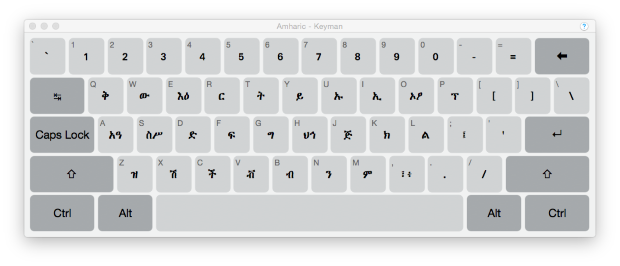2020. 3. 11. 04:34ㆍ카테고리 없음
Keyboards come with various layouts and localizations, which are specific to given country or region. Here you can find a guide to quickly determine which localization you have. Below the guide, you'll find also a list of all MacBook localizations with detailed illustrations.
These are also the exact layouts we use on our. If you have laptop other than MacBook,.
Ipa Keyboard Download
Table of contents.? The Guide MacBook Keyboard Localizations Throughout the World US English Layout Used in the US, Canada, Australia, Puerto Rico, Guam, Philippines, Malaysia, Singapore, India, Hong Kong, New Zealand, and many other countries. (US) English International Layout It has identical characters layout as US English but uses ISO (European) key shapes. This is the most common layout in Poland. We also advise our customers to choose this layout, if they want to switch from any European language to English keyboard. UK (British) English Layout Used in the United Kingdom and Ireland. Arabic Layout Used in Arabic-speaking countries: Egypt, Saudi Arabia, Iraq, Kuwait, Bahrain, United Arab Emirates, Qatar, Oman, Yemen, etc.
Bulgarian Layout Used in Bulgaria. Chinese (Taiwanese) Layout Used in Taiwan and Hong Kong.

Croatian Layout Used in Croatia, Bosnia, Serbia, Slovenia, and Montenegro. Czech Layout Used in the Czech Republic. Danish Layout Used in Denmark, Greenland and Faroese Islands. Dutch Layout Dutch layout is a modified English International with euro sign added. It is used in Netherlands.
French Layout Used in France, Belgium, Morocco, Algeria, French Guyana, Chad, Cote d'Ivoire. It's also used in parts of Luxembourg and Switzerland. French Canadian Layout This is a QWERTY variant of French layout, used by French-speaking citizens of Canada, mainly in Quebec region. German Layout Used in Germany, Austria, Liechtenstein, and can also be found in Switzerland. Greek Layout Used in Greece. Israeli (Hebrew) Layout Used in Israel. Kudos to Hila M.
For corrections:-) Hungarian Layout Used in Hungary. Icelandic Layout Used in Iceland.
Ipa-sil Keyboard Layout For Mac Mac
Italian Layout Used in Italy. Japanese Layout Used in Japan. It has distinct key shapes, with additional keys next to space, and changed placement of Caps Lock, Control, and Fn keys.
Korean Layout Used in South Korea. Norwegian Layout Used in Norway and Svalbard. Portuguese Layout Used in Portugal and Brazil.
Romanian Layout Used in Romania, although US English and English International layouts are also very popular. Russian Layout Used in Russia, Kazakhstan, Uzbekistan, Kirgistan, Tajikistan, Turkmenistan, Ukraine and Belarus. Slovak Layout Used in Slovakia.
Spanish Layout Used in Spain and latin american countries: Mexico, Peru, Venezuela, Colombia, Chile, Argentina, Cuba, Belize, Guatemala, Salvador, Honduras, Panama, Costa Rica, Nicaragua, Surinam, Ecuador, Bolivia and Paraguay. Swedish Layout Used in Sweden and Finland.
Ipa Sil Keyboard Layout For Mac


Swiss Layout Used in Switzerland. Thai Layout Used in Thailand. Turkish Layout This is a modern version of Turkish layout which utilizes QWERTY key placement (Turkish-Q). How to physically switch layouts or to have a multilingual keyboard During the years we run Keyshorts we learned how many people need to change their keyboard layout or to have multiple layouts on the same keyboard. Unfortunately, purchasing and replacing keyboard is expensive and hard, and - in the case of quite a few layouts - impossible. Keyboard stickers are a great solution for this. They are relatively cheap and easy to apply and come with many different layouts.
You can even customize their caption and background colors. If you simply want to switch your keyboard to another layout, we can suggest choosing our. If you want to have two languages on one keyboard, try our. If you need even more, our will be the perfect solution. Conclusion If this article was helpful or you simply like what we do, please use buttons below to share this guide with the world 😀 Thanks!
Phonetic Symbols, Keyboards and Transcription This page provides some information and resources for the use of the International Phonetics Association alphabet of phonetic symbols for the transcription of speech using computers. Unicode Phonetic Keyboard and SIL Fonts The Unicode Phonetic Keyboard is an installable keyboard for Windows PCs that provides a convenient keyboard layout for the word-processing of phonetic transcription using Unicode fonts. The installation package comes complete with two Unicode fonts: and that have been developed. Download (self-install executable, 2MB). Download (self-install executable, 2MB). Download Guide to the use of Unicode Phonetic Symbols John Wells has written a number of pages which give more information about the set of phonetic symbols available in Unicode, and about how these can be used in Microsoft Word and other applications:. IPA-SAM Phonetic Fonts The fonts are a set of TrueType fonts ( not Unicode) suitable for Windows and MacOS that include all current IPA symbols.
The keyboard layout is designed to be compatible with. SAMPA–SAM Phonetic Alphabet is a phonetic transcription coding that uses normal ASCII characters as replacements for IPA symbols. It has been designed for phonemic/broad phonetic transcription of European languages. Spoken Phonetic Transcription The page provides a facility to read out SAMPA phonetic transcription for English in synthetic speech! Some other pages on our site you may enjoy. ESection is a free program for calculating and displaying spectral and other related analyses of sections of a speech signal. It can be used to demonstrate the different spectral properties of elements of speech.
It can also calculate an LPC spectrum, autocorrelation and cepstrum analyses, and can display the signal as a waveform or as a spectrogram. It automatically finds formant and fundamental frequency values. EFxHist is a program to analyse joint speech and laryngograph recordings. EFxHist locates each pitch period in the laryngograph waveform and produces statistical analyses including distributions of fundamental frequency, closed-quotient, jitter and shimmer. A tutorial that provides an extensive introduction to our sensation of the loudness of sounds.
University College London - Gower Street - London - WC1E 6BT - +44 (0)20 7679 2000 - Copyright © 1999-2016 UCL.